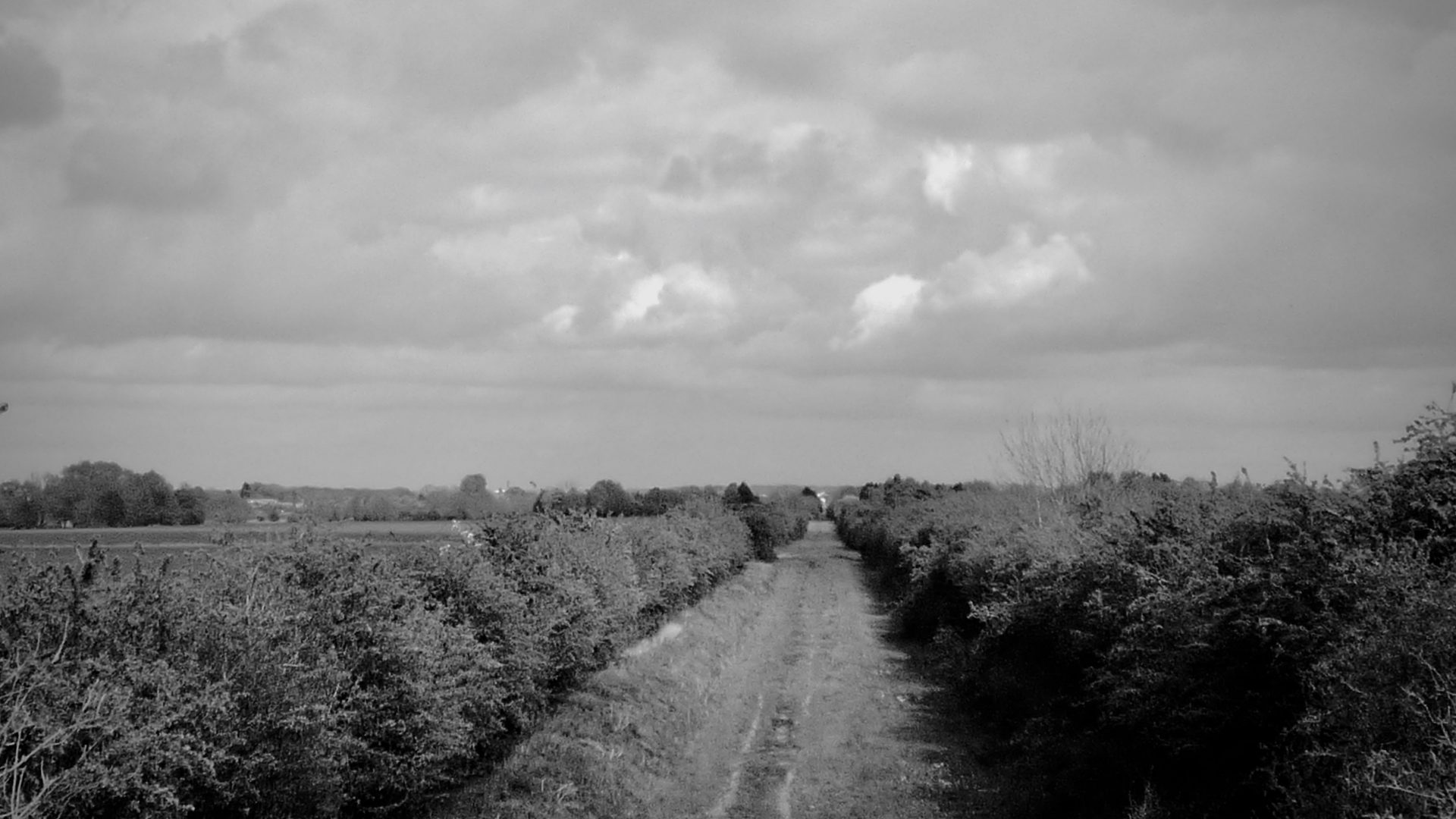There’s a merlin in the hawthorn.
I’ll find this out soon; I’m afraid my all too average awareness isn’t up to picking her out of the mess of thorns and spikes. But she is fully on point: she knows we’re approaching, and has done for a couple of hundred yards or more. How does this knowledge filter through? Does the air quiver for her, a wave of disruption we generate just by being there? Does the normal separate and reach out? Are the alerts heightened versions of the sights and sounds we know? However it happens, she can pick us out with her hunter’s acumen.
She gives us only so far, only up to this point and then no more. Lifts and goes. Out into the field, which is where we pick her up, too late I will say later, which is the wrong way to think because look, a fantastic sleek dart, tumbling low over the newly-tilled earth.
In a few magical seconds she’s over on the far side, half a kilometre away, and vanished, gone head height into the woods opposite. Gone, straight into the shadows between the trees, too quick and too distant and subtle for us to see the twists and recalibrations she must surely be making to dive between the branches.
I’ve only ever seen merlins twice before, both females, both visitors from the continent. They’re the smallest hawk here, smaller than a kestrel. And they come from chill northern heaths and moorlands to spend winter in less turbulent spaces.
She was sat peacefully under the giant radio observatory dishes, watching the rabbits and hares, eying up yellowhammers and skylarks.
The Mullard spreads over several acres, encroaching fields and hedgerows giving it an abandoned Cold War frontier feel. A spy station or listening post, a forgotten and edited out Bond villain’s lair in the English countryside.
But it’s not entirely unused. The giant dish, the one you can see from the road, moves slowly and deliberately in the cold sunshine, gleaming white against the blue. It takes forever to shift a few degrees, the movement betrayed by gliding shadows. The surrounding dishes, smaller, darker, some rusted into place, look blindly up at the same heavenly traverse year in year out.
On the far side, beyond where the merlin has flown, there is an array of eight white dishes called the Ryle telescope. Four of the dishes were mounted on almost a mile of track so that they could be moved during various experiment configurations. The track they used was the old Cambridge to Oxford Varsity Line, which had closed in 1967.
The nearest station, Lord’s Bridge, the penultimate stop before Cambridge, was repurposed as part of the University’s radio astronomy observatory buildings. The old buildings sit on the far side, still giving off that railway buildings air, as such places always do.
The bed of the line carries on west and then curves south forming hedgerows and ditches and field boundaries before it crosses under Ermine Street where the next station, Old North Road, sits tucked away.
You’d be forgiven for missing it now. All the noise and clamour is strictly cars and lorries. The road slips away from the A1198 and swiftly turns around to the now privately-owned buildings. From the road bridge, the cars speeding past at our backs, the old signal box – restored – looks like it may control a solitary long unobeyed semaphore signal. The OS map from 1892 shows a goods shed here, a cattle pen, industry. There is even a small length of track, just a few yards, that runs past before it goes back to turf.
An old picture of Lord’s Bridge, taken in December of the year before the line’s closure, shows a garden, neat and tidy, a veg patch with winter greens and a tilled square waiting for spring. A clothes line. Rain water butt. In a video of a journey through here, taken a couple of years earlier still, it is high summer, the station master walks out to greet the train, and there are hanging baskets and flowers by the wall, a brief glimpse of shirtsleeves and waistcoat lost in the lens glare and degrading 8mm.
The footpath cuts through the middle of the site. Dishes on either side, aerials, fences, huts and paths. There are rabbits everywhere. White down and grey flight feathers suggest a wood pigeon has perished recently, but there’s no carcass to be seen.
Between the travelling clouds, high and rare, are patches of pale blue, promises of the turn of the year, of more and greater machinery shifting. Against it three buzzards wheel and turn like long exposure stars around Polaris.

Leave a Reply